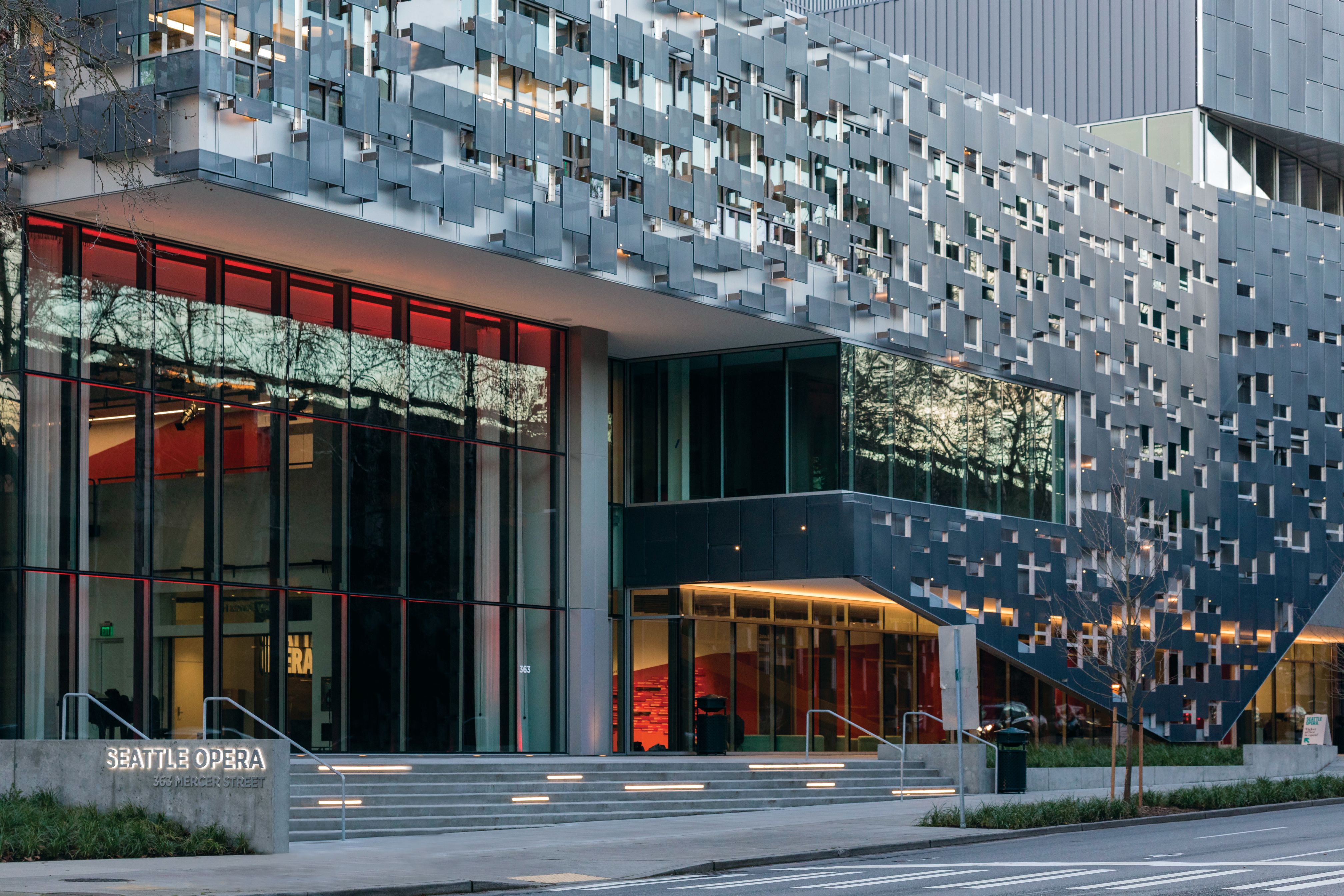
The physicality required to sing opera provides an emotional dimension which was lost in this film version. Bodies heave with breath and faces become distorted. During a live performance, singing loudly enough to fill an entire concert hall has its own exaggerated effect. The only obvious weakness in the film comes in some of the acting, in particular the lip-syncing which was too meek. Lau has appeared regularly with the Seattle Opera in recent years, while Burns makes his Seattle Opera debut. Adam Lau’s Angelotti and Matthew Burns’s Sacristan deserve mention as well: both singers make the most of their roles. Making his Seattle Opera debut, Michael Chioldi presents a Scarpia oozing a menacing bite. Cavaradossi’s idealism is captured by the wonderful tenor Dominick Chenes whose sweet-sounding voice contrasts with LoBianco’s volatile performance. Alexandra LoBianco’s mighty Tosca vacillates between emotional extremes: we feel both the longing and irrational jealousy she aims at Cavaradossi as well as her hatred for Scarpia. Supporting the strong camerawork and the iconic location is an exemplary soundtrack featuring some of the brightest singers working today. Alexandra LoBianco (Tosca) (c) Philip Newton Finally, shots that center Tosca in the frame – while a projection of Cavaradossi being tortured is cast on the wall behind her – foreshadow the tragic inevitability of events yet to come. Scarpia’s malevolence is highlighted with mid-range shots that capture Michael Chioldi’s rage-filled performance. By viewing the action off-center, we become immersed in the tension as Tosca negotiates for Cavaradossi’s freedom. Scarpia and Tosca’s confrontation is brought off to great effect because of the cinematography. A little creativity – worm’s-eye angles and tasteful projections behind Scarpia – delivered the goods for this famous scene. COVID restrictions on large groups made it impossible to stage a spectacle at St. On stage, the Te Deum is a study in excess with enormous chorus, canons and tons of extras needed for the high church spectacle. The most famous of the opera’s set pieces is the Te Deum that closes Act I. These set pieces are brought together with visually interesting cinematography by Dan Wallace Miller and Ken Christensen to help tell Floria Tosca’s tale. Even the stunning Shrine of the Blessed Virgin Mary becomes a prison cell, where the final tragic moments of the opera are set into motion.

Scarpia stomps around in the cathedral’s side chapel, now transformed into his office. Angelotti scoops life-replenishing water from the baptismal font to quench his thirst. Action unfolds in nearly every prominent spot in the church. Its imposing architecture, ornate interior and almost ominous sense of place make it a good substitute for the first act’s intended setting – the Church of St. Act I of the opera is set entirely within a church which is enough reason to use St. The star of this production is Seattle’s iconic St. It is a produced film of the opera set at an iconic Seattle location that makes use of cinematography and a rich soundtrack – and soon to be available for streaming. Seattle’s latest Tosca isn’t a live version or even a recording of a past staging. Luc Bondy’s hyper-sexual production for the Metropolitan Opera in 2009 stirred strong feelings among viewers who had grown accustomed to the beloved opulence of Franco Zeffirelli’s version. This warhorse has been staged many times at McCaw Hall, most recently in 2015, and refreshing a classic like Tosca can be challenging. Take, for instance, Seattle Opera’s latest production of Puccini’s Tosca. But even with hopes that the future will include a return of the familiar, innovation is still abundant. In Seattle, COVID-19 is receding, and arts organizations are looking ahead to a new season in the autumn with in-person performances. (ZC) Alexandra LoBianco (Tosca) & Michael Chioldi (Scarpia) (c) Philip Newton Learn about ways to give and get involved.Įverything you need to know about attending a Seattle Opera performance.ĭiscover the many ways for people of all ages to connect with opera.United States Puccini, Tosca: Soloists and Chorus of the Seattle Opera, Seattle Symphony / Kazem Abdullah (conductor), Seattle. Pull back the curtain and explore the inner workings of Seattle Opera.ĭonors make Seattle Opera possible.


Subscriptions, individual opera tickets, ways to save, and more.


 0 kommentar(er)
0 kommentar(er)
